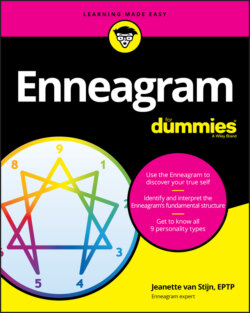Читать книгу Enneagram For Dummies - Jeanette van Stijn - Страница 57
На сайте Литреса книга снята с продажи.
HELP — I DON’T WANT TO BE CATEGORIZED!
ОглавлениеMany people dislike designating personality structures by numbers. They associate this process with getting a serial number — it makes them feel that they’re being put into a category. In response, Helen Palmer, a major figure in the world of the Enneagram, says that the Enneagram doesn’t set out to categorize anyone; it’s merely an aid you can use to discover which category is keeping your personality type imprisoned. You can free yourself from this category on your own. And by the way, you don’t have to typecast yourself, so to speak, in order to work with the Enneagram. The goal is to expand your self-awareness, to get to know yourself better. After you read the descriptions of all the various types, ask yourself: What part of this do I recognize in myself? How does this work in my case? Am I exactly like that or a little different? This is also a way to get to know yourself better and become more aware of your limiting behaviors. If you’re interested in determining your type on your own, you can find tips and exercises throughout this book that will help you on your way.
How this apparent contradiction works itself out can be illustrated in a brief example. Mary (Type 1), Louise (Type 7), and Margaret (Type 9) avoid conflicts rather than face them head-on. (Another way to refer to them is conflict avoiders.) However, they tend to avoid conflicts for different reasons. In Mary’s value system, for example, “one just doesn’t do conflicts.” Louise’s conflicts are nothing to laugh about; they’re simply painful and, as such, are situations she wants to avoid. Margaret is afraid of destroying her relationship with whoever is the cause of the conflict.
The motivations behind all three people's desire to avoid conflict are quite different, but they all lead to the same behavior. This is why you look not at the behavior itself in the Enneagram but rather at the driving forces behind that behavior. In the Enneagram, the underlying motivation, or driving force, is considered more important than the behavior itself, because recognizing this drive is the starting point for further development. The approach for learning to deal with conflicts in a different, more productive fashion varies for each of the three. For them, it’s not about handling conflicts per se, but rather about uncovering the actual reason they avoid conflicts.
The word type crops up time and time again in this book, and you'll also come across the term type mechanism, which refers to the internal mechanism of a type. You can find out more about type mechanisms in Part 2.
